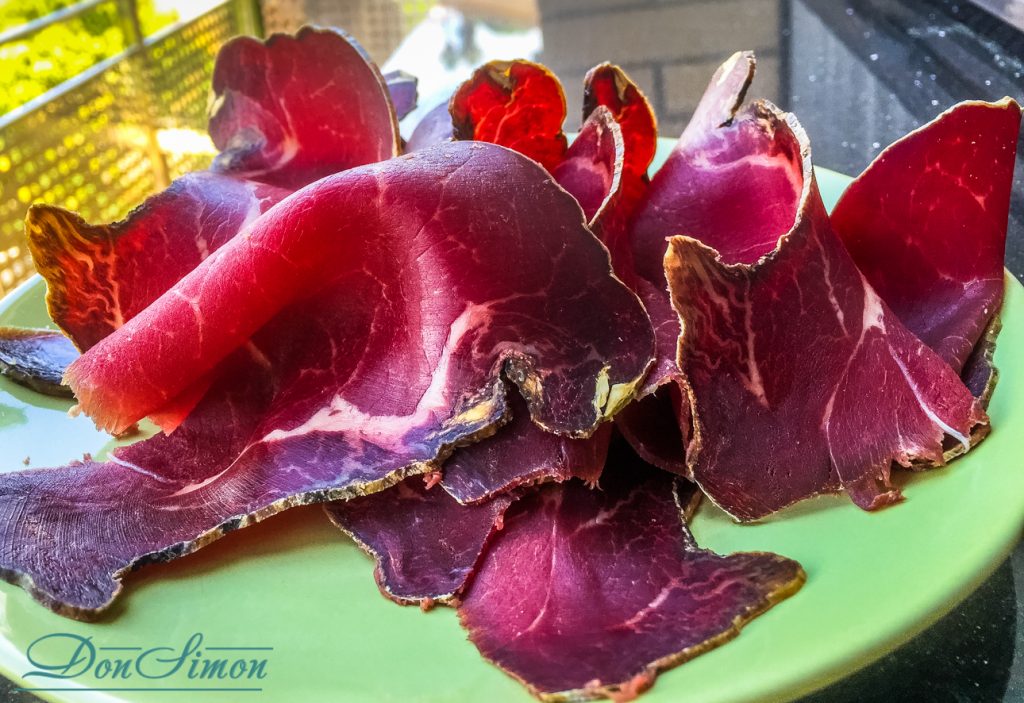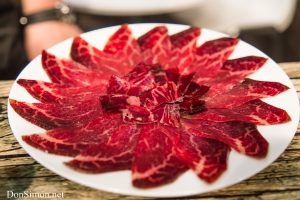Cecina — beef jamon
Jamon — much-feared! Calling card and the most famous national product of Spain, representing the country and praising it to the skies.
A huge industry, hundreds of sorts and lots of manufacturers involved in producing pork legs and other constituent parts. But why only pork? There’s perfect beef in Spain, which is characterized by a magnificent taste and balanced fat. It is also hardly affected by the diseases so common among pigs. Also, a cow is much bigger and it contains almost no fat which is not eatable when pork jamon is cooked, by the way. And the saddest thing is that I’m not a big fan of pork meat. It seems to me dull and boring, not showing an expressive, bright meat taste. These are my strange preferences.
And the saddest thing is that I’m not a big fan of pork meat. It seems to me dull and boring, not showing an expressive, bright meat taste. These are my strange preferences.
I tried to create something of beef many times. As a result I got perfect jerky, smoked beef, products in sous-vide but I learnt the recipe of real authentic cecina only during my visit to Barcelona’s food fairy. One of the ancient manufacturers from Spanish province Leon, where the most famous cow specie in Spain is crossbreed, told me this recipe.
The recipe is simple. We cut pieces of 5−8 kilos from beef, salt them following the standard rule 1 kg — 24 hours. According to manufacturers' words (I spoke with many of them), nitrites and nitrates are not used at all since beef is safer and there’s no need to «color» it additionally.


When the process of salting is over the meat goes through equilibration at low temperature and high humidity. Later, and that is the main difference from pork jamon, it is slowly smoked in a big store-house during 10−14 days. In a tray there are oak logs smoldering. After that, pieces of lightly smoked beef pass to standard drying until ready. The whole process takes from 7 months to a year. The cecina price is not a big one, around 25 Euros per kilo. In contrast, a nice but not the top one Iberico Bellota jamon costs 10 times more.
The cecina meat is dark, of deep red color, a dense one, with a strict and intense taste. Real foodies add some drops of good olive oil. It also goes well with black truffle and flakes of grated parmesan.

The product which resembles cecina most of all is Caucasian basturma, although it is made of beef sirloin and the meat is well-spiced.
And finally I’m going to open a huge Spanish secret. The pork’s foreleg is called «paleta» and it is much cheaper since the meat is worse and it contains more bones.
I’ve been keeping 2−3 pieces of beef drying in my chamber for the last couple of years. And the best cecina is made of the best sirloin, but not of the cow’s back part. Of course, it costs a little bit more, but if it makes me happier, why not?
Recipe for domestic cooking here (link)



 Русский
Русский Español
Español